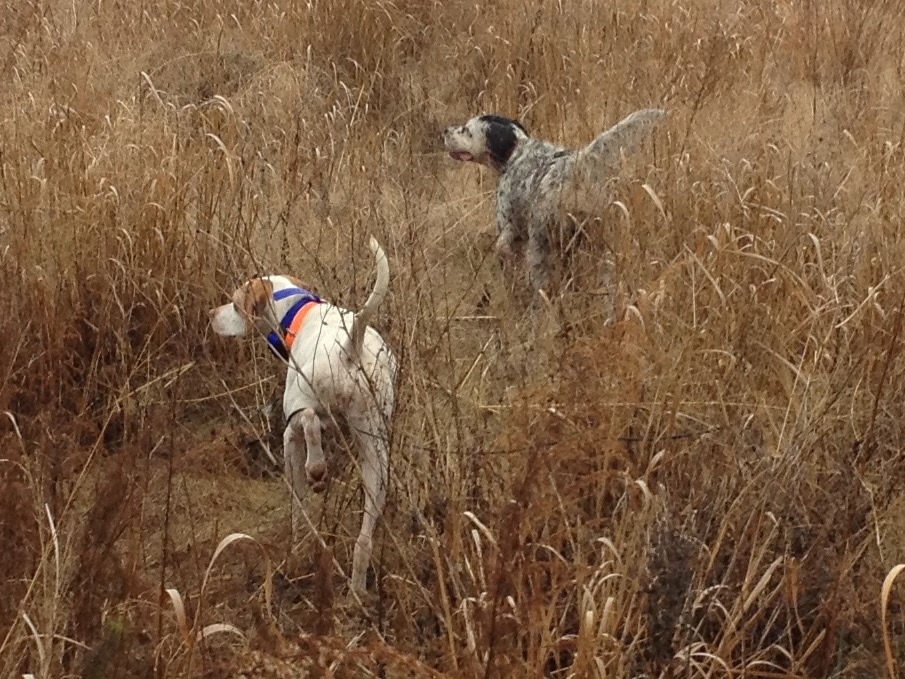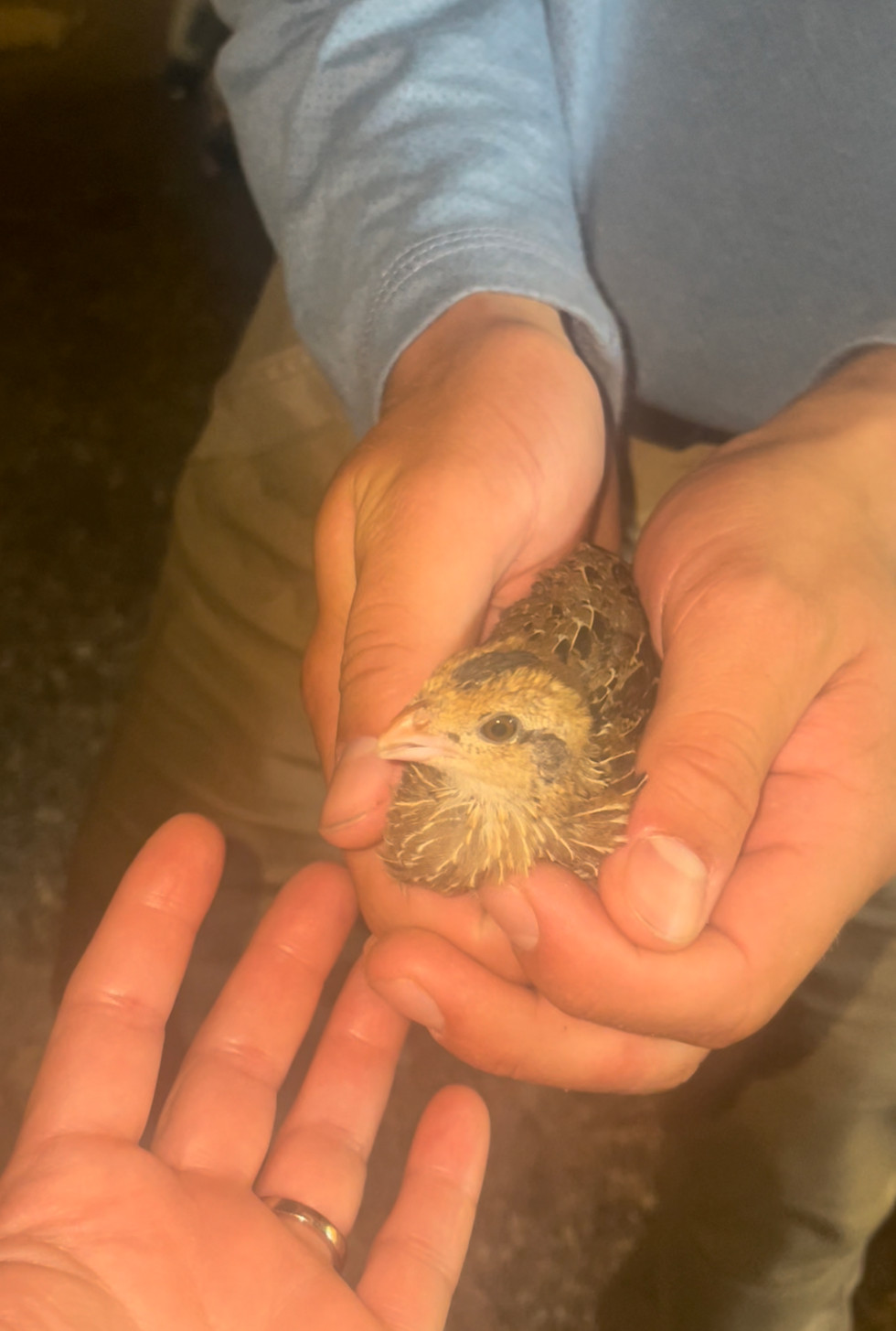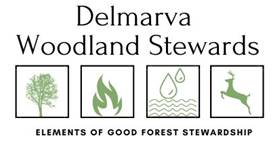Did you know that prescribed fire and timber harvesting can restore wildlife habitat?
- Maryland Forests

- Oct 29, 2022
- 5 min read
Updated: Nov 8, 2022

Meet John Long, owner of The Hideaway Farm in Wicomico County, MD
Maryland forests are home to some reclusive, elusive creatures, including the bobwhite quail, a game bird that many Marylanders would never know existed due to their limited numbers and shrinking habitat. However, some folks remember the unique “bobwhite” call as the resident quail scurried along on our forest edges and fields.
John Long recalls that time and currently spends his off time working to bring the species back to a thriving population in a sustainable, quail-friendly young woodland habitat in Wicomico County. He directly supports the species in the most impactful way by successfully raising northern bobwhite quail through active forest management.
When it comes to this species’ struggles, “most everybody says it was the loss of habitat,” says Long. With this in mind, he incorporates a combination of thinning and prescribed burns to create a young forest that his favorite game bird can call home. On a broader scale, he admits many factors impacted quail, including predators, farming chemicals, and practices. “You have to manage all these different parts to have quail rebound back,” Long notes successfully.
In the end, he knows it all ties into the forest. Long has seen aggressive thinning on his property lead to “a lot of natural succession of plants that for the next 5 or 6 years will provide great quail habitat,” he says. Long adds that while the aforementioned understory benefits the bird population, at the same time, he also has a crop of trees that will continue to grow in value. He calls it a “win-win situation.”
Wildlife and woodlands are Long’s life, and his 1,000-acre property is dedicated to raising the northern bobwhite and stocking them in their natural habitat “just like they do with a trout stream.” From a one-day-old bird he gets from North Carolina to a 6-8 week-old bird that’s then released, the quail are in the hands of excellent stewards in Long and an adjoining landowner, Tom Fisher, that has partnered in his efforts. It’s a hands-on operation and a passion for them, and their annual stocking flock is up to 7,000 now after initially starting annually with 125 birds about ten years ago.
Long and Fisher release the young birds in groups of 25-50, where they think a covey (a group) of wild quail historically would have been. The hope is that they will get accustomed to living in the wild after about a month and adapt to forest habitats and potential predators. Long points out, contrary to popular opinion, they have seen success and even some reproductive carryover into successive breeding seasons.
One of the most rewarding moments was when they started hearing more and more of the mating calls in the spring as they had been raising and releasing more and more broods. “We were starting to see broods that reproduced there on the property,” Long says. They had such success that they even started giving birds to other people who had an interest in this iconic native game bird. Even more rewarding for Long is taking his grandkids out on a hunt, being led by a dog to point out the covey of quail, and hopefully a successful hunting trip, but at the very least soaking up nature and enjoying the woods and the great outdoors.
Long has paired up with the Department of Natural Resources on restoration work on his land. The agency has close to 5,000 acres neighboring his property with the Nanticoke Wildlife Management Area on the other side of Quantico Creek. He knows having contiguous forestland between 1,000 and 10,000 acres is essential to have enough birds to establish a resident population and sustainable habitat. Long notes with quail there is “a lot of migration and immigration,” so corridors are an absolute necessity for long-term survival.
Other quail advocates and partners are Washington College and Professor Dan Small and the college’s Chino Farms, where habitat restoration work has been ongoing as part of its Natural Lands Project. “Chino Farms is an excellent display of conducive quail habitat. They have a lot of quail, and it’s inspiring to see that because once somebody shows that it can be successfully done, the rest of us can try to copy,” Long explains. Quail Forever and Lower Shore Land Trust are other advocacy groups that have helped boost support for the northern bobwhite quail.
The combination of fire and timber harvest are the two most impactful tools Long says he has to use on his land to create sustainable quail habitat. “Burning is becoming more popular. It significantly increases your likelihood of having quail around, especially in thinned areas where you need an understory favorable to quail,” he adds.
Following a thinning and a burn last spring on his property, they already hear more birds. Sound forest management seems to be the key as opposed to taking cropland and trying to build habitat and hedgerows. Long notes the issue of “clean farming” where there are no hedge rows or ditches, no place to cover, and “the quail just won’t survive.”
It’s the mosaic of forest habitat that he sees as key to quail having a long-term, viable future. Aggressive thinning to create a layered understory with new succession plants, intermixed with some “really big majestic looking trees,” is what a diverse woodland is to Long and one that offers cover and corridors for the northern bobwhite. “You’ve got to look at the whole picture, the layering of the forest, and decide the proper balance,” says Long.
People manage their forests for different objectives, and for John Long, it is all about the rush of the covey rise when quail are pointed and jumped up from the forest floor on a hunt with his grandchildren in tow. To him, woodland stewardship is engaging young people and recognizing the responsibility to future generations. “Be appreciative of the natural resources provided to us. We must be grateful for them and manage them for generations to come,” Long says.
Photo Credit: EDWIN REMSBERG PHOTOGRAPHS
Written By: Francis Smith, Natural Resource Planner- Maryland Forest Service
Project Support: Maryland DNR as part of the Delmarva Woodland Stewards Grant, the Maryland Department of Commerce, and the Rural Maryland Council.
On October 26, 2021, John Long and Tom Fisher hosted a tour of their properties. The pictures below are from Lt. Governor Boyd K. Rutherford's social media post, where he said, " I spent today on the Eastern Shore, learning more about how timber harvesting factors into wildlife and resource conservation...I was joined by Maryland Department of Natural Resources Secretary Jeannie Haddaway-Riccio, Treasurer Nancy Kopp, and staff from the Comptroller's Office."
View these videos or use this link to learn more about bobwhite quail and the Natural Lands Project at Washington College. The farm serves as a model for which other landowners, both state and federal, can use a blueprint to affect similar change.
LINKS TO LEARN MORE:
Quail Forever
Lower Shore Land Trust
Maryland's Forests- Great for the Environment and the Economy
Why Join MFA?
Click here to learn more about MFA's Faces of Forestry project.
If you are interested in becoming one of our "faces," contact Beth Hill at 410-463-1755











































Comments